
Book 2. High beginning grammar book in a 5-level series for ESL students. This is the second of the two books for beginners.
- Subject:
- English Language Arts
- Material Type:
- Homework/Assignment
- Textbook
- Date Added:
- 05/26/2016

Book 2. High beginning grammar book in a 5-level series for ESL students. This is the second of the two books for beginners.
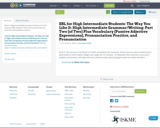
Book 4. High intermediate grammar book in a 5-level series for ESL students. This is the second of the two books for intermediate students.
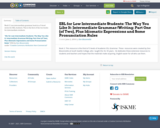
Book 3. Low intermediate grammar book in a 5-level series for ESL students. This is the first of the two books for intermediate students.
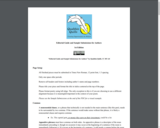
Quabbin Quills, a 501(c)(3) nonprofit in Massachusetts, designed an editorial guide for authors to get a general framework on how to format their work for submission as well as to display basic grammar rules for reference.
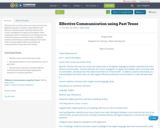
This less will cover the correct use of past tense in the Egnlish language to faciliate comprehensive and effective communication. Students will learn the correct conjugation of regualr and irregular verbs commonly used in conversation, and will practice the verbal and written use of these verbs. In addition, students will develop an understanding of how these verbs can help support effective professional communication in a job interview setting.

This primer provides a basic introduction to Egyptian colloquial Arabic, beginning with the alphabet, demonstrating both pronunciation and the writing system. From there the text moves on to discussing the parts of speech as well as some of the dialect's basic grammar. The book then progresses to common phrases and ends with a vocabulary section that relies on transliteration.
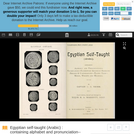
This manual, written in 1914, includes a very basic introduction to the colloquial Egyptian Arabic spoken in Cairo. The 80-page text focuses mostly on vocabulary and contains 28 different word lists. There is also a brief section on grammar, one on the Arabic alphabet and how it is pronounced in Egypt, and a collection of sample dialogues. Although the book covers the alphabet, most sections rely on transliteration into Latin characters. The filesize of the PDF is 5 MB.

The need for this particular grammar arises from the peculiar shape of the MDiv curriculum at Asbury Theological Seminary. Several years ago the faculty adopted a curriculum that required one semester of Greek and one semester of Hebrew, each as preparatory for a basic exegesis course in each discipline.
It became clear after several years of trial and error that a “lexical” or “tools” approach to learning Greek and Hebrew was inadequate, no matter how skilled the instructors or how motivated the students. In today's general vacuum of grammatical training in public education across the United States, students typically enter seminary training with no knowledge of how languages work. Any training we might give them in accessing grammatical information through the use of Bible software programs will, we learned, come to naught in the absence of an understanding of just what such information actually means. We agreed that we actually needed to “teach the language itself,” at least in some rudimentary fashion, if we hoped students would make sense of grammatical and linguistic issues involved biblical interpretation.
The first 12 chapters of this grammar are designed to correspond to the first semester's instructional agenda. In these chapters we introduce all the parts of speech, explain and drill the basic elements of grammar, set forth the larger verb system (excluding the perfect system), teach the tenses of the Indicative Mood only (again, excluding the perfect system), and help students build a vocabulary of all NT words occurring 100 times or more. We also lead students into the NT itself with carefully chosen examples, while at the same time guiding them in each lesson to learn the use of the standard NT lexicon [BDAG] and an exegetical grammar [Wallace's Greek Grammar Beyond the Basics]. We are well aware of the limitations of this approach, but genuinely believe that some instruction along these lines is better than none, and that such an approach provide a foundation for students interested in moving beyond the first semester (into chapters 13-24) into a firmer grasp of the language of the NT.

This open-access textbook helps students learn to read New Testament Greek at the elementary level. It includes clear, concise explanations of grammar and syntax, helpful examples, and essential vocabulary, with no assumption of previous language study, and it does not require accents for most forms. At the end of each of its twenty chapters, students will find short Greek-language episodes from the life of a fictional early Christian family of Jewish ancestry, short readings from the Greek New Testament and Septuagint, and review/homework exercises that can help reinforce new concepts and vocabulary. This book can help students prepare to read Nijay Gupta and Jonah Sandford’s Intermediate Greek Reader: Galatians and Related Texts, also available as an open-access textbook.

Thank you for visiting our Tennessee Board of Regents OER Grant English 1020: Introduction to Literature course. The pilot launched in spring 2023. This Walters State Community College composition course focuses on reading and analyzing poetry, drama, and short stories. The course has been designed with Quality Matters standards, Universal Design for Learning concepts, Growth Mindset fundamentals, and Lumen Circles concepts.
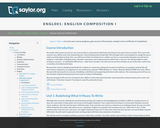
This course promotes clear and effective communication by sharpening critical thinking and writing skills. The first unit is designed to change the way in which students think about writing--as a conversation rather than a solitary act. The second unit focuses on academic writing and explores the PWR-Writing or Power-Writing Method (PWR Pre-Write, Write, Revise). The remaining units will focus on the minutiae of good writing practices, from style to citation methodology. Upon successful completion of this course, the student will be able to: Demonstrate mastery of principles of grammar, usage, mechanics, and sentence structure. Identify the thesis in another individual's essay. Develop a thesis statement, structure it in an introductory paragraph, and support it with the body of the essay. Organize ideas logically within an essay, deploying adequate transitional devices to ensure coherence, flow, and focus. Differentiate between rhetorical strategies and write with an awareness of rhetorical technique and audience. Differentiate between tones and write with an awareness of how tone affects the audience's experience. Demonstrate critical and analytical thinking for reading and writing purposes. Quote, paraphrase, and document the work of others. Write sentences that vary in length and structure. (English 001)

The 11th grade learning experience consists of 7 mostly month-long units aligned to the Common Core State Standards, with available course material for teachers and students easily accessible online. Over the course of the year there is a steady progression in text complexity levels, sophistication of writing tasks, speaking and listening activities, and increased opportunities for independent and collaborative work. Rubrics and student models accompany many writing assignments.Throughout the 11th grade year, in addition to the Common Read texts that the whole class reads together, students each select an Independent Reading book and engage with peers in group Book Talks. Students move from learning the class rituals and routines and genre features of argument writing in Unit 11.1 to learning about narrative and informational genres in Unit 11.2: The American Short Story. Teacher resources provide additional materials to support each unit.

People often say that mankind should learn from history. Charles Dickens, whose books are considered classics, set his novel A Tale of Two Cities in the past. He wanted his readers to learn from the bloody French Revolution and from the widespread brutality in London. Both cities (Paris and London) offer the reader a glimpse into dark and dangerous times. As students read about Dickens's Victorian setting and learn his view of the French Revolution, they will think about what makes a just world. Students will have a chance to think about their own experiences, and, using techniques they have learned from Charles Dickens, they will do some writing that sends a message about your own world.
ACCOMPLISHMENTS
To complete the unit accomplishments, students will:
Read the Charles Dickens novel A Tale of Two Cities.
Read several short pieces, including a biography of Dickens and excerpts from other literature, to help them understand Dickens’s world and the world of the novel.
Explore new vocabulary to build their ability to write and speak using academic language.
Practice close reading and participate in several role plays and dramatic readings to help them experience the dramatic writing style of Charles Dickens.
Write a vignette and a short narrative piece, and practice using descriptive detail and precise language.
Write a reflection about the meaning of Dickens’s novel.
GUIDING QUESTIONS
These questions are a guide to stimulate thinking, discussion, and writing on the themes and ideas in the unit. For complete and thoughtful answers and for meaningful discussions, students must use evidence based on careful reading of the texts.
How does good storytelling affect the reader, and how can a good story promote change in the world?
What was the Victorian view of gender roles?
How can power be abused?
What is loyalty ? What are the limits of loyalty?
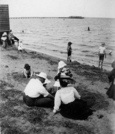
In this lesson, you will consider the relationship between character and caricature, and discuss the ways that Dickens presents his characters—whether realistically or as exaggerations—and begin to explore the reasons he might have had for presenting his characters in this way.In this lesson, students will consider the relationship between character and caricature, discuss the ways that Dickens presents his characters— whether realistically or as exaggerations—and begin to explore the reasons he might have had for presenting his characters in this way.

In this unit, students will explore great works of American literature and consider how writers reflect the time period in which they write. They will write two literary analysis papers and also work in groups to research and develop anthologies of excellent American stories.
ACCOMPLISHMENTS
Students read and analyze stories from several 19th-, 20th-, and 21st-century American authors. After researching a time period, they select stories from that period to create an anthology. The readings enhance their understanding of the short story, increase their exposure to well-known American authors, and allow them to examine the influence of social, cultural, and political context.
Students examine elements of short stories and have an opportunity for close reading of several American short stories. During these close readings, they examine the ways that short story writers attempt to explore the greater truths of the American experience through their literature.
GUIDING QUESTIONS
These questions are a guide to stimulate thinking, discussion, and writing on the themes and ideas in the unit. For complete and thoughtful answers and for meaningful discussions, students must use evidence based on careful reading of the texts.
If you were to write a short story about this decade, what issues might you focus on?
What defines a short story? Just length?
To what extent do these stories reflect the era or decade in which they were written?
To what extent are the themes they address universal?
CLASSROOM FILMS
History.com has short videos on the Vietnam War (“Vietnam” and “A Soldier's Story”).

In this lesson, students will explore some elements of grammar in a paragraph from “The Things They Carried.”

In this lesson, students will continue to read, annotate, write about, and discuss “The Things They Carried.”

In this lesson, students will continue to read, annotate, write about, and discuss “The Things They Carried.”
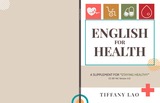
English for Health is an educational supplement designed to help individuals stay healthy by improving their understanding and communication in healthcare contexts. The book covers various topics essential for navigating the healthcare system effectively.Each chapter includes vocabulary lists, grammar exercises, role-play activities, listening scripts, and practical advice to enhance the reader's comprehension and ability to communicate in health-related situations. The book aims to empower readers with the knowledge and language skills necessary for maintaining their health and effectively utilizing healthcare resources.
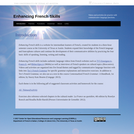
Enhancing French skills is a website for intermediate learners of French. It includes authentic language videos from French websites, as well as interviews of French speakers on cultural topics. Videos and activities are organized into five broad themes and tagged by communicative language function with links into Tex’s French Grammar for specific grammar explanations and interactive exercises. Each theme includes a pdf of suggested classroom activities and homework.